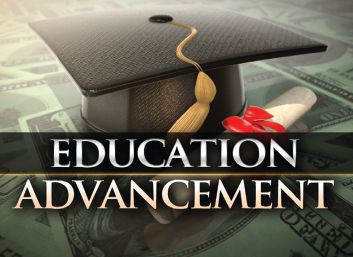Report highlights racial gap in college attainment rates
By Nisa Islam Muhammad -Staff Writer- | Last updated: Aug 6, 2019 - 1:28:41 PMWhat's your opinion on this article?
WASHINGTON—Access to a college education is easier said than done. A report by the Center for American Progress, “Those Left Behind,” shows how geography and race illustrate the disturbing status of national college attainment rates—and gaps—for every county in the United States.

|
The report used American Community Survey data gathered from 2013 to 2017 to show that rural areas tend to have low attainment rates and that high attainment rates in urban areas mask significant gaps by race and ethnicity.
“A college education is still among the most important tools to achieve economic prosperity, but degrees are not distributed equally across the country,” explained Colleen Campbell, director of Postsecondary Education at the Center for American Progress and author of the report.
“While a greater number of Americans have a college degree than ever before, more than 60 percent of adults still have not earned one. When we take stock of college attainment nationwide, we can no longer overlook the role of place in who has access to college and goes on to get a degree.”
The report highlights four areas that illustrate these disparities: Lee and Pulaski counties, Arkansas; Nye County, Nevada; Washington, D.C.; and Hialeah, Florida.
The report explains that degrees are held largely by those in urban and suburban areas:
Ninety-two percent of bachelor degree recipients live in urban/suburban areas.
Of the bottom 10 percent of counties in terms of attainment, 84 percent can be classified as mostly or completely rural.
Of the top 10 percent of counties in terms of attainment, just 16 percent are rural.
Rural counties are home to just 14 percent of the nation’s college campuses, despite covering 97 percent of U.S. land area.
While urban areas have larger numbers of college graduates these areas also have some of the largest racial and ethnic college graduate gaps in the country.
The concentration of highly educated people obscures the low attainment rates within urban communities—in particular, for people of color, including Black, Latinx, and Native Americans.
The case study of Washington, D.C., detailed in the report tells an important story.
The nation’s capital is a prime example of racial inequality in educational attainment. The report explains that in the nation’s capital there are more Black-identifying adults than White, non-Hispanic adults—about 216,000 compared with 189,000.
Washington also has one of the highest rates of degree attainment in the nation, with 57 percent of adults holding at least a bachelor’s degree, including 33 percent with a graduate degree. While nationally, there is slightly less than one adult with a graduate degree for every one adult without a high school diploma, in Washington, there are 3.3 people with a graduate degree for every high school dropout.
However, D.C. residents with degrees are largely White; three times as many White adults as Black adults hold a bachelor’s degree or higher, a 66 percentage point attainment gap.
In Washington, D.C., 91 percent of White adults have a college degree, but only 29 percent of underrepresented adults do.
According to the report, those without a degree have not shared in the economic boom that has occurred in the district over the past decade. This is in part due to the huge influx of college-educated young adults into the district, most of whom are White.
Though Washington was 70 percent Black in 1970 and known as Chocolate City, that presence has eroded due to gentrification. The differences between the college haves and have-nots is stark; one-third of residents without a high school diploma live in poverty compared with six percent of those with a bachelor’s degree.
Significant numbers of D.C.’s Black residents, 46 percent, without a college degree are largely concentrated in Wards 7 and 8.
Washington also has little access to affordable colleges, especially those that are open enrollment—meaning they allow students to be admitted based on limited criteria.
The report explains that the only public institution within city limits, the University of the District of Columbia, enrolls fewer than 5,000 students every year, and the district spends just one percent of its local funds budget on the school. Nationwide, the average rate is 5.8 percent.
The report released June 27 recommends local, state, and federal policymakers improve overall economic prosperity, encouraging approaches that include postsecondary and workforce-based reforms that better support the Americans who have been left behind.
INSIDE STORIES AND REVIEWS
-
-
About Harriett ... and the Negro Hollywood Road Show
By Rabiah Muhammad, Guest Columnist » Full Story -
Skepticism greets Jay-Z, NFL talk of inspiring change
By Bryan 18X Crawford and Richard B. Muhammad The Final Call Newspaper @TheFinalCall » Full Story -
The painful problem of Black girls and suicide
By Charlene Muhammad -National Correspondent- » Full Story -
Exploitation of Innocence - Report: Perceptions, policies hurting Black girls
By Charlene Muhammad -National Correspondent- » Full Story -
Big Ballin: Big ideas fuel a father’s Big Baller Brand and brash business sense
By Bryan Crawford -Contributing Writer- » Full Story






 Click Here Stay Connected!
Click Here Stay Connected!








